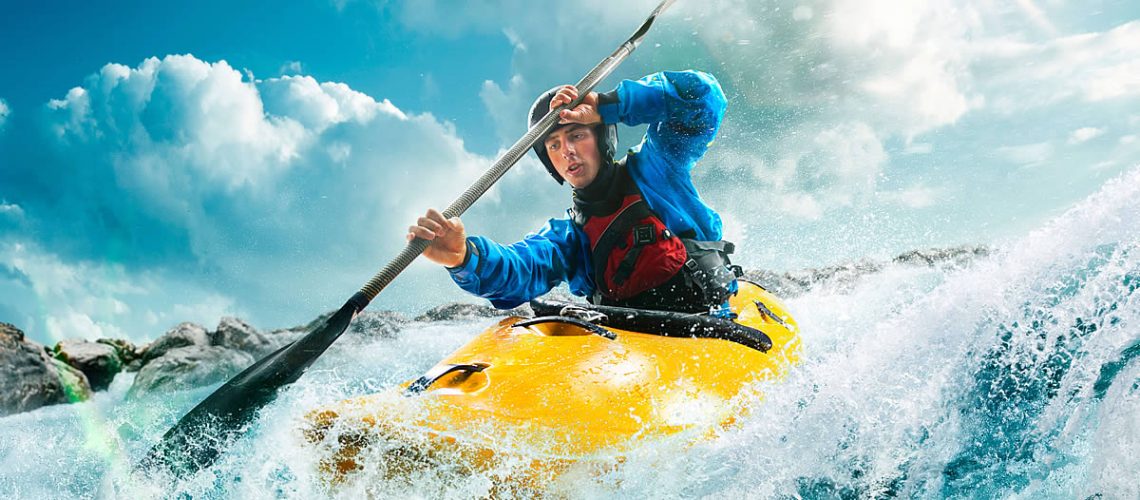
Whilst kayaking is now one of the most popular watersports to materialise in recent years, the kayak vessel itself has actually been around for quite a while, as far back as 5000 years ago, albeit it was a rather rudimentary version. It was first introduced into Europe in the mid-1800s, with the Germans and the French initially using it for recreational purposes and the Olympic games taking on the sport in 1936. The kayak itself has come a long way since those early years and is much lighter than it used to be, with most now made from resilient plastics or, at the top end of the budget, fibreglass and carbon fibre for even lighter versions.
You may think kayaking looks like a relatively gentle recreational pastime, which it is, but it’s also a great way to improve your overall health. It can boost cardiovascular fitness, and through moving the paddle with your arms, shoulders, chest, and back can increase muscle strength. In addition, rotating the body to power a kayak can also increase leg and torso strength. So, whilst the vessel makes for the perfect adventure to see places you can’t otherwise get to by land, kayaking is also the ideal all-round exercise for the body, which is why so many are taking up the sport! Here’s a quick guide to the types of kayaking you can enjoy:
Kayaking in Wales, kayaking in Cornwall, kayaking in London, kayaking in Scotland – wherever you choose in the UK your guaranteed a unique experience!
With a multitude of options to choose from, deciding where to take your kayak on holiday may be a little tricky to narrow down. However, whether you’re looking for lakes, rivers or seas, there’s plenty going on throughout the UK and the wider world to tempt your interest! For example, local Cornishman Mark Meardon has over 30 years of experience in the sport and offers sea kayaking around the beautiful Cornwall and the Isles of Scilly. Those ladies who want a female only experience can take a Ladies Only Wild Camping Weekend for a once-in-a-lifetime breathtaking experience. If you fancy something a little more northern, Lost Earth Adventures have some truly stunning experience days in Yorkshire, The Peak District and Cumbria. Further north, for kayaking in Scotland, Sea Kayak Argyll & Bute are on hand with guided tours to observe nature along the wild Atlantic coastline, mountains, lochs and open seas. And for those wanting a little less country, why not try kayaking in London, on a unique sightseeing tour with London Kayak. You’ll also find a plethora of adventurous exploits at Much Better Adventures, where the world is your kayaking-oyster!
The best time to learn kayaking is the summer months when the waters are calmer and it’s warmer! Basic skills can be learned in just a few hours if you’re kayaking in protected bodies of water, and taking a kayak class with a qualified instructor is the best way to learn quickly and safely. A sit-on-top kayak is better for beginners to learn the skills, and once you have the basics down to a T, it then comes down to practising and perfecting your technique over time. Yes, you can’t become Mallory Franklin or Liam Heath overnight!
Whilst kayaking is all about having fun and adventure, you don’t want the day to end in disaster, which is why being prepared makes common sense.